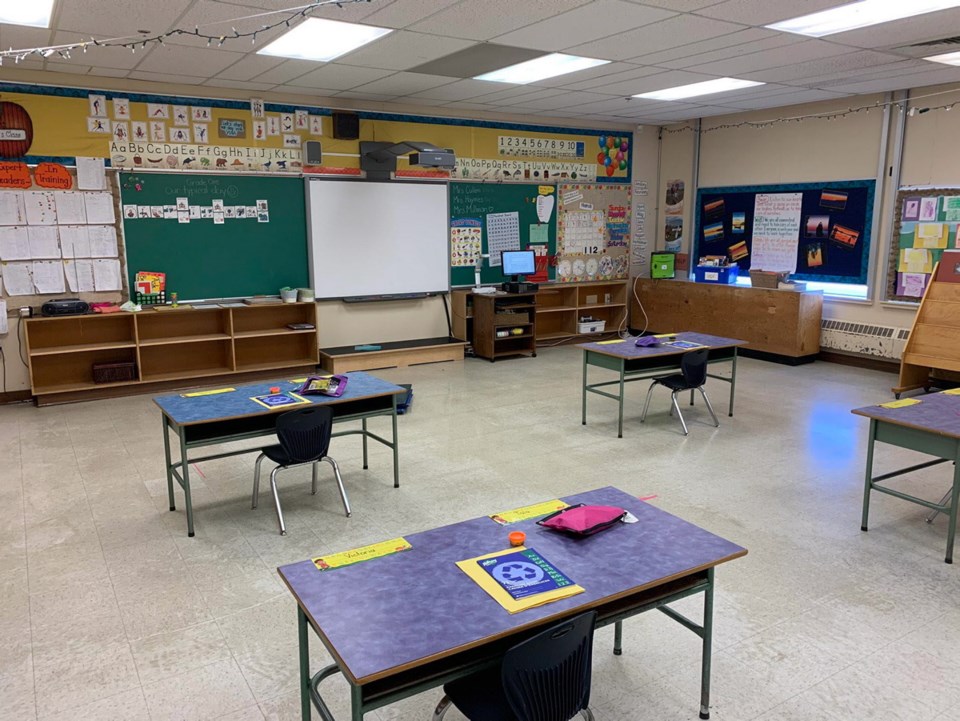Geoff Johnson is a former Superintendent of Schools.
High school teachers and administrators past and present will watch with interest as, for the 2020-21 school year, Abbotsford School District’s high schools will adopt a quarterly timetable schedule. The Edmonton public and Catholic systems are doing the same.
As a high school student I suffered through the tendency of my school’s linear timetable of eight subjects, an hour or on each subject five times each day, to disrupt my preference to pursue a lesson in literature a little or sometimes a lot further in favour of the curriculum’s requirement for calculus (which I never fully grasped).
Switching after 65 minutes from one subject to another every hour or so tempted me to abandon school altogether.
Just when I had finally begun to “get into” the subtleties of the novel we were studying, the period change bell would ring and I had to flick some intellectual switch and leap across the chasm between John Steinbeck’s fascinating world to some mathematical derivative that defined the limit of the difference quotient or the relationship between differentiability and continuity. Or something.
As a teacher, the same challenge existed, testing my ability to move student minds from physics and Coulomb’s law (which describes the force of attraction or repulsion between two charged bodies) to the beauty and complexities of a Neruda love sonnet.
Looking back, I see now that there was probably an obvious connection I should have used, but we just ploughed on while I tried to retrieve some interest, even appreciation, of the brilliance of Neruda’s “Green was the silence, wet was the light, the month of June trembled like a butterfly.”
Abbotsford’s move to a quarterly high school timetable means a break away from the typical two-semester or even linear schedule, where students have four or five classes per semester and five classes or periods with different teachers and subjects each day with no two days being the same.
The quarterly system involves students taking fewer classes, usually only two at any one time, often with one subject in the morning and a second in the afternoon with a change to new subjects four times each year. Lots of time to dig into a topic.
The quarterly system is a relief for teachers as well. Exhausting as it must be to “stand and deliver” a lesson from the front of the room for 60 to 75 minutes, five times each day, teaching like that is simply not possible for a full morning or full afternoon class.
In fact, the quarterly system will be a gift to the majority of secondary school teachers who really want time to explore not only their subject topics but also a variety of pedagogical methods matched to their individual students.
I’ve heard teachers say that the quarterly system in their secondary school “has helped me remember why I got into teaching.”
Admittedly a quarterly timetable will not suit some students. For some, a full morning of literature with a teacher with whom they do not really connect, will be a fate worse than death.
For others a longer period will be pure joy if it means really getting your head into science or a second language for an entire afternoon.
In its informational website, Abbotsford School District suggests that, apart from the system providing easier contact tracing during the pandemic with reduced in-class contacts, a quarterly timetable will, in turn, facilitate stronger relationships between students and teachers, the kind that makes the best K-7 schools places kids like to be.
True, the bottom line to all this is that no system of timetabling a secondary school works for everybody.
Constructing a traditional “5x8” secondary school timetable is complex — more a problem of persistence than intelligence. It is a process which requires thousands of decisions, some of which are obscure in the extreme.
As any secondary school administrator will tell you, organizing and synchronizing all the considerations necessary for a school timetable is a nightmare.
Putting together a secondary school program requires co-ordinating at least four basic elements: learners, teachers and their academic qualifications, room availability and the length of the school day, all within contract requirements.
To some extent, a quarterly timetable mitigates several of these problems including the problems faced when placing an individual student who needs only two more required subject to graduate. Those subjects, at that level, cannot be timetabled at the same time.
Compared with all this, three-dimensional chess is easy.
Abbotsford School District is to be congratulated for its direct approach to dealing with the COVID crisis through a rethink and reorganization of its secondary schools. As Dale Carnegie famously said: “When fate hands you a lemon, make lemonade.”



